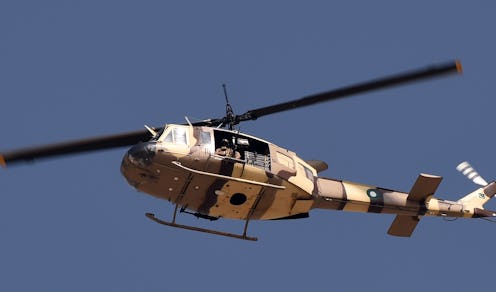News
What Caused The Helicopter Crash In Pakistan?
Pakistan’s army has said that a helicopter crash in northern Pakistan Friday has killed seven people, including the ambassadors of Norway and the Philippines. The military helicopter was en route to the disputed region of Kashmir, where the passengers planned to attend the opening of a tourism project, when it went down in the mountainous territory of Gilgit-Baltistan. The dead also included the wives of the Indonesian and Malaysian envoys to Pakistan and two Pakistan Army pilots, BBC reports. It was unclear what caused the crash, though two explanations have already surfaced within hours of the news.
The helicopter was carrying 17 people — 11 of whom were foreigners. While Norwegian Ambassador Leif Larsen and Philippine Ambassador Domingo Lucenario Jr. were killed, fellow diplomats Marcel de Vink of the Netherlands and Andrzej Ananicz of Poland sustained injuries — the extent of which are unclear. Pakistani army spokesperson Major-General Asim Bajwa only stated that the survivors had “varying degrees of injuries.” They were transported to the Combined Military Hospital at Jutial (18 miles from the crash site) for treatment.
The downed helicopter was one of a convoy of three traveling to Gilgit. The crash occurred in the Naltar Valley, around 186 miles north of the capital city of Islamabad. The helicopter reportedly struck a military school building as it went down, but BBC noted it was not yet clear whether any people were injured on the ground. The helicopter’s passengers were due to attend the opening of a tourism project, which was to be presided over by Pakistan’s Prime Minister Nawaz Sharif. Sharif was on his way to Gilgit when the crash occurred, but cancelled his visit in its wake, according to Al Jazeera. Radio Pakistan reports that the PM expressed “deep grief and sorrow" over the lives lost.
Sharif’s rapid change of schedule could be seen not only as a gesture of respect, but one of fear — of a terrorist threat implicit in the downed aircraft, for example. The Guardian reported that sectarian terrorist groups have been known to operate in the region, but added the Pakistani Taliban and other anti-state militias were not active in the area. Pakistan’s widely circulated English daily Dawn reported Bajwa ruled out the possibility of terrorism, or subversive activity, when he spoke to the outlet Friday.
Despite this denial of terrorist activity, the AP reported the Pakistani Taliban issued a statement claiming responsibility for the incident, alleging they used an anti-aircraft missile to bring the helicopter down. Taliban spokesman Muhammad Khorasani said the crash was part of a plan to assassinate Sharif. The claim has not yet been verified, and it is possible the militant group is opportunistically cashing in on a unrelated tragedy. The AP added the Pakistani army had not yet responded to queries regarding the Taliban’s claim.
Bajwa said the crash was caused by a technical fault, but highlighted that an investigation into the cause would be carried out, according to procedure. A board of inquiry is now being assembled for this purpose. The army’s most recent statement, on Twitter, stated that “as per initial info,” the aircraft “developed tech fault while landing.” Dawn reported that the Russian-made helicopter was part of the Pakistan military’s “ageing” transport fleet.
The Guardian points out the high altitude, mountainous terrain of Gilgit-Baltistan made the region perennially potentially dangerous for aircraft. At the junction of the Himalayas, the Karakorum, and the Hindu Kush (all major mountain ranges), the area boasts over 100 peaks more than 23,000 feet high. An eyewitness, local Irtiza Hussain, told The Guardian: “We heard a very horrible sound and we ran away, fearing the soldiers would start asking questions of us.” One witness told Al Jazeera that the aircraft had seemed to suffer a technical issue.
The Express Tribune reported strong winds may have also contributed to the crash. “I saw the chopper going down. The wind was quite strong when this happened,” a senior government official told the publication. The Naltar valley area had been cleared by security agents in the days leading up to the crash, the Tribune reports, in anticipation of the PM’s arrival.
The ambassadors of Romania and Lebanon were also reportedly injured in the crash, along with high commissioners from South Africa and Indonesia. Pakistan Army pilots Major Faisal and Major Altamash died after sustaining injuries, and one unidentified Pakistani crew member was also among the deceased.
Images: Getty Images (3)
